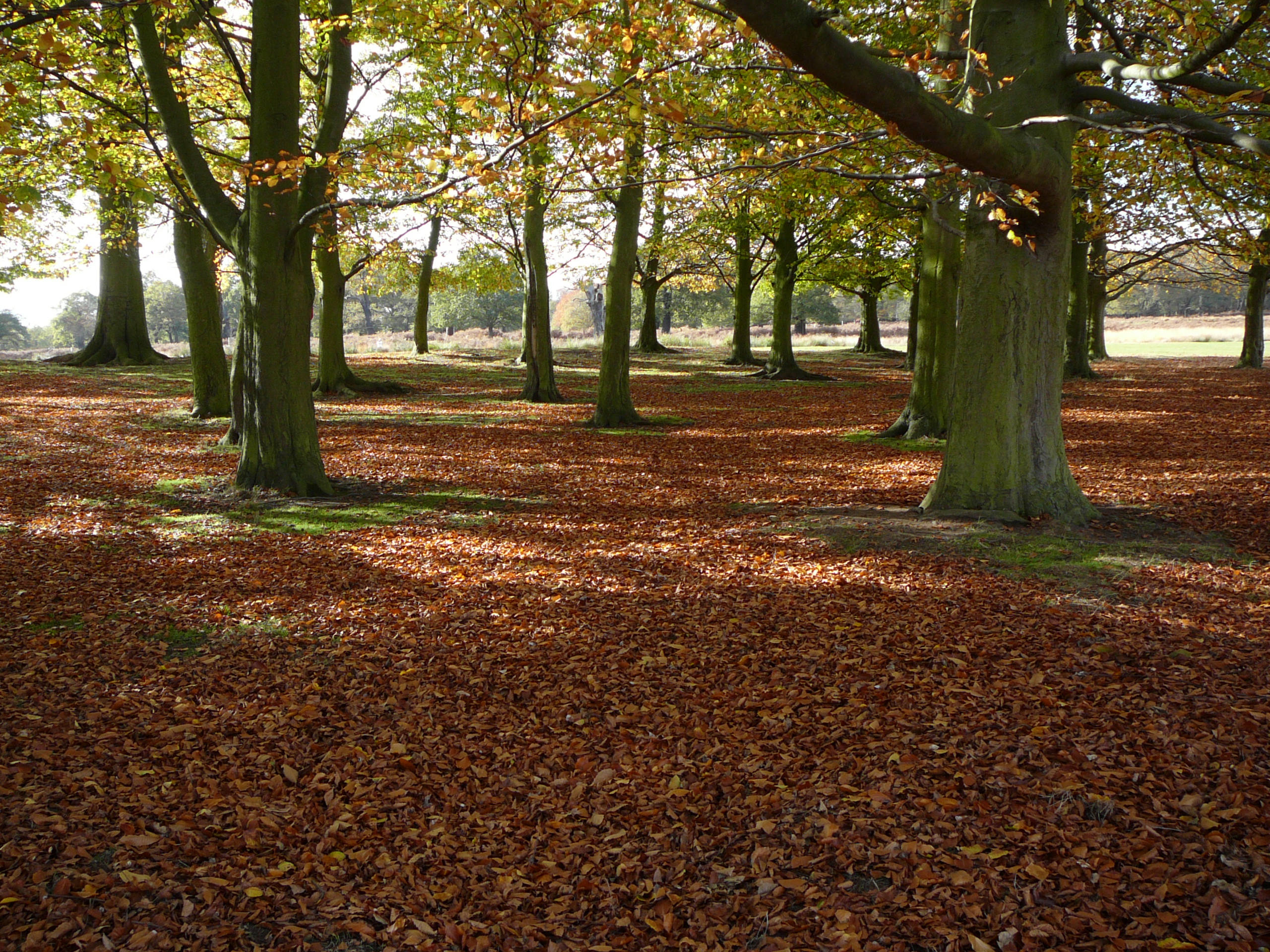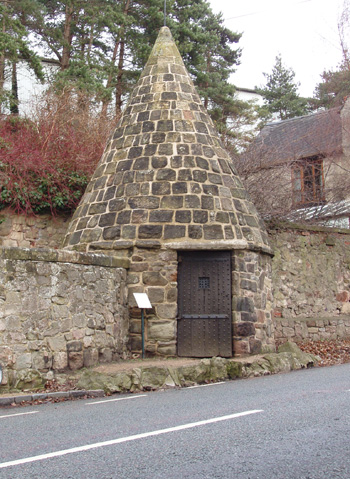|
A307 Road
The A307 road runs through SW London and NW Surrey. It is primary at the north-east end; the remainder is non-primary, generally superseded in the mid-twentieth century in two stages by newer alignments of the Portsmouth Road, the Kingston bypass and Esher bypass of the A3, which runs along a slightly oblique axis. Route London Borough of Richmond upon Thames: Kew and Richmond The road begins at the junction with the A205 South Circular Road beside Kew Green , where it is named Kew Road. It then runs towards Richmond upon Thames through the west of Kew. At the junction with the A316 in Richmond it becomes a non-primary A-road through the town centre then heads through Petersham where for fewer than 100 metres it kinks west and then travels south through Ham. A B-class road, the B353, leaves the A307 in Kew and runs around the town centre and up Richmond Hill and by-passing Richmond, before rejoining the A307 at Petersham. Royal Borough of Kingston upon Thames: Kingsto ... [...More Info...] [...Related Items...] OR: [Wikipedia] [Google] [Baidu] |
Cobham, Surrey
Cobham () is a large village in the Borough of Elmbridge in Surrey, England, centred south-west of London and northeast of Guildford on the River Mole. It has a commercial/services High Street, a significant number of primary and private schools and the Painshill landscape park. Toponymy Cobham appears in Domesday Book of 1086 as ''Covenham'' and in 13th century copies of earlier charters as ''Coveham''. It is recorded as ''Cobbeham'' and ''Cobeham'' in the 15th century and the first use of the modern spelling "Cobham" is from 1570. The name is thought to derive from an Anglo-Saxon landowner either as ''Cofa's hām'' or ''Cofa's hamm''. The second part of the name may have originated from the Old English ''hām'' meaning a settlement or enclosure, or from ''hamm'' meaning land close to water. The area of the village known as Cobham Tilt, is first recorded as ''la Tilthe'' in 1328. The name is thought to derive from the Old English ''Tilthe'', meaning "cultivated land". ... [...More Info...] [...Related Items...] OR: [Wikipedia] [Google] [Baidu] |
Scilly Isles, Surrey
The Scilly Isles () is a double roundabout in Hinchley Wood, Surrey, between the English towns of Esher and Kingston upon Thames on the traditional route of the Portsmouth Road. The name is a corruption of "silly islands", a nickname given to the road system when it was built in the 1930s. History and notability Since the 19th century there has been a large pub at the junction, named after a prominent aristocrat-soldier the Marquis of Granby. The junction acquired its name during the 1930s when the then new Kingston by-pass road rejoined the original route of the Portsmouth Road that was then the equivalent to today's A3. The present road is termed the A307 and the A309 crosses this and links via a dualled section to the A3 road and the north. A series of roundabouts were built at the busy (for the 1930s) intersection, then called "traffic islands". The unfamiliar nature of the double roundabout caused it to be called the "silly islands", which became locally accepted as its ... [...More Info...] [...Related Items...] OR: [Wikipedia] [Google] [Baidu] |
Richmond Park
Richmond Park, in the London Borough of Richmond upon Thames, is the largest of London's Royal Parks, and is of national and international importance for wildlife conservation. It was created by Charles I in the 17th century as a deer park. It is now a national nature reserve, a Site of Special Scientific Interest and a Special Area of Conservation and is included, at Grade I, on Historic England's Register of Historic Parks and Gardens of special historic interest in England. Its landscapes have inspired many famous artists and it has been a location for several films and TV series. Richmond Park includes many buildings of architectural or historic interest. The Grade I-listed White Lodge was formerly a royal residence and is now home to the Royal Ballet School. The park's boundary walls and ten other buildings are listed at Grade II, including Pembroke Lodge, the home of 19th-century British Prime Minister Lord John Russell and his grandson, the philosophe ... [...More Info...] [...Related Items...] OR: [Wikipedia] [Google] [Baidu] |
Sewerage
Sewerage (or sewage system) is the infrastructure that conveys sewage or surface runoff (stormwater, meltwater, rainwater) using sewers. It encompasses components such as receiving drains, manholes, pumping stations, storm overflows, and screening chambers of the combined sewer or sanitary sewer. Sewerage ends at the entry to a sewage treatment plant or at the point of discharge into the environment. It is the system of pipes, chambers, manholes, etc. that conveys the sewage or storm water. In many cities, sewage (or municipal wastewater) is carried together with stormwater, in a combined sewer system, to a sewage treatment plant. In some urban areas, sewage is carried separately in sanitary sewers and runoff from streets is carried in storm drains. Access to these systems, for maintenance purposes, is typically through a manhole. During high precipitation periods a sewer system may experience a combined sewer overflow event or a sanitary sewer overflow event, which forces untrea ... [...More Info...] [...Related Items...] OR: [Wikipedia] [Google] [Baidu] |
Crown Lands Act 1851
The Crown Lands Act 1851 is an Act of the UK Parliament. It established the Commissioners of Works as the body responsible for management of royal parks and gardens, specifically; * Saint James's Park * Hyde Park * Green Park * Kensington Gardens * Chelsea Garden * The Treasury Garden * Parliament Square Garden * Regent's Park * Primrose Hill * Victoria Park * Battersea Park * Greenwich Park * Kew Gardens, Pleasure Grounds, and Green * Kew and Richmond Roads * Hampton Court Gardens, Green, and Road * Hampton Court Park * Richmond Park and Richmond Green * Bushey Park * Holyrood Park See also *Crown Lands Act References External linksThe Crown Lands Act 1851 as amended, from Legislation.gov.uk legislation.gov.uk, formerly known as the UK Statute Law Database, is the official web-accessible database of the statute law of the United Kingdom, hosted by The National Archives. It contains all primary legislation in force since 1267 and a .... United Kingdom Acts o ... [...More Info...] [...Related Items...] OR: [Wikipedia] [Google] [Baidu] |
Crown Commissioner
Crown Commissioner () was a proposed new title to replace the title of Lieutenant Governor of the Isle of Man. On 19 October 2005, the Isle of Man's parliament, Tynwald, approved a proposal to change the lieutenant governor's title to to reflect the new role which the governor plays in the government of the Isle of Man. '''', The proposed change was then submitted to the |
Village Lock-up
A village lock-up is a historic building once used for the temporary detention of people in England and Wales, mostly where official prisons or criminal courts were beyond easy walking distance. Lockups were often used for the confinement of drunks, who were usually released the next day, or to hold people being brought before the local magistrate. The archetypal form comprises a small room with a single door and a narrow slit window, grating or holes. Most lock-ups feature a tiled or stone-built dome or spire as a roof and are built from brick, stone and/or timber. Such a room was built in many shapes; many are round, which gives rise to a sub-description: the punishment or village round-house. Village lock-ups, though usually freestanding, were often attached to walls, tall pillar/tower village crosses or incorporated into other buildings. Varying in architectural strength and ornamentation, they were all built to perform the same function. Nicknames and forms They have acqu ... [...More Info...] [...Related Items...] OR: [Wikipedia] [Google] [Baidu] |
Watchmen (law Enforcers)
Watchmen were organised groups of men, usually authorised by a state, government, city, or society, to deter criminal activity and provide law enforcement as well as traditionally perform the services of public safety, fire watch, crime prevention, crime detection, and recovery of stolen goods. Watchmen have existed since earliest recorded times in various guises throughout the world and were generally succeeded by the emergence of formally organised professional policing. Early origins An early reference to a watch can be found in the Bible where the Prophet Ezekiel states that it was the duty of the watch to blow the horn and sound the alarm. (Ezekiel 33:1-6) The Roman Empire made use of the Praetorian Guard and the Vigiles, literally the watch. Watchmen in England The problem of the night The streets in London were dark and had a shortage of and poor quality artificial light. It had been recognised for centuries that the coming of darkness to the unlit streets of a tow ... [...More Info...] [...Related Items...] OR: [Wikipedia] [Google] [Baidu] |
Claremont (country House)
Claremont, also known historically as 'Clermont', is an 18th-century Palladian mansion less than a mile south of the centre of Esher in Surrey, England. The buildings are now occupied by Claremont Fan Court School, and its landscaped gardens are owned and managed by the National Trust. Claremont House is a Grade I listed building. Claremont estate The first house on the Claremont estate was built in 1708 by Sir John Vanbrugh, the Restoration playwright and architect of Blenheim Palace and Castle Howard, for his own use. This "very small box", as he described it, stood on the level ground in front of the present mansion. At the same time, he built the stables and the walled gardens, also probably White Cottage, which is now the Sixth Form Centre of Claremont Fan Court School. In 1714, he sold the house to the wealthy Whig politician Thomas Pelham-Holles, Earl of Clare, who later became Duke of Newcastle and served twice as Prime Minister. The earl commissioned Vanbrugh to ... [...More Info...] [...Related Items...] OR: [Wikipedia] [Google] [Baidu] |
Robert Clive
Robert Clive, 1st Baron Clive, (29 September 1725 – 22 November 1774), also known as Clive of India, was the first British Governor of the Bengal Presidency. Clive has been widely credited for laying the foundation of the British East India Company rule in Bengal. He began as a writer (the term used then in India for an office clerk) for the East India Company (EIC) in 1744 and established Company rule in Bengal by winning the Battle of Plassey in 1757. In return for supporting the Nawab Mir Jafar as ruler of Bengal, Clive was granted a jagir of £30,000 () per year which was the rent the EIC would otherwise pay to the Nawab for their tax-farming concession. When Clive left India he had a fortune of £180,000 () which he remitted through the Dutch East India Company. Blocking impending French mastery of India, Clive improvised a 1751 military expedition that ultimately enabled the EIC to adopt the French strategy of indirect rule via puppet government. Hir ... [...More Info...] [...Related Items...] OR: [Wikipedia] [Google] [Baidu] |
Buffer Zone
A buffer zone is a neutral zonal area that lies between two or more bodies of land, usually pertaining to countries. Depending on the type of buffer zone, it may serve to separate regions or conjoin them. Common types of buffer zones are demilitarized zones, border zones and certain restrictive easement zones and green belts. Such zones may be comprised by a sovereign state, forming a buffer state. Buffer zones have various purposes, politically or otherwise. They can be set up for a multitude of reasons, such as to prevent violence, protect the environment, shield residential and commercial zones from industrial accidents or natural disasters, or even isolate prisons. Buffer zones often result in large uninhabited regions that are themselves noteworthy in many increasingly developed or crowded parts of the world. Conservation For use in nature conservation, a buffer zone is often created to enhance the protection of areas under management for their biodiversity importa ... [...More Info...] [...Related Items...] OR: [Wikipedia] [Google] [Baidu] |





